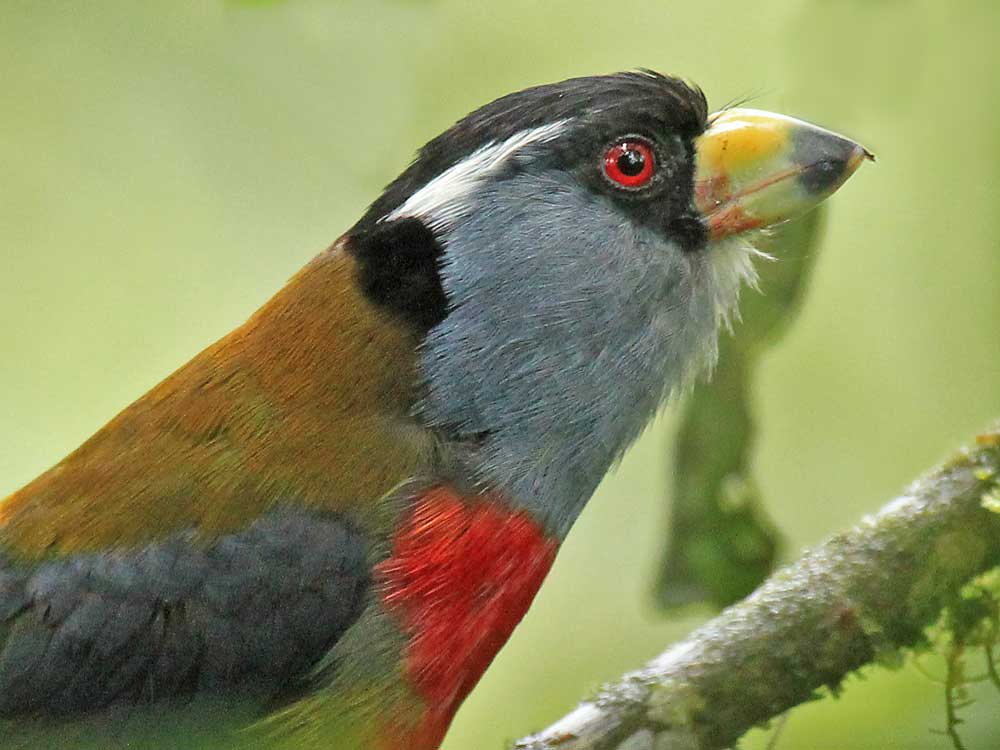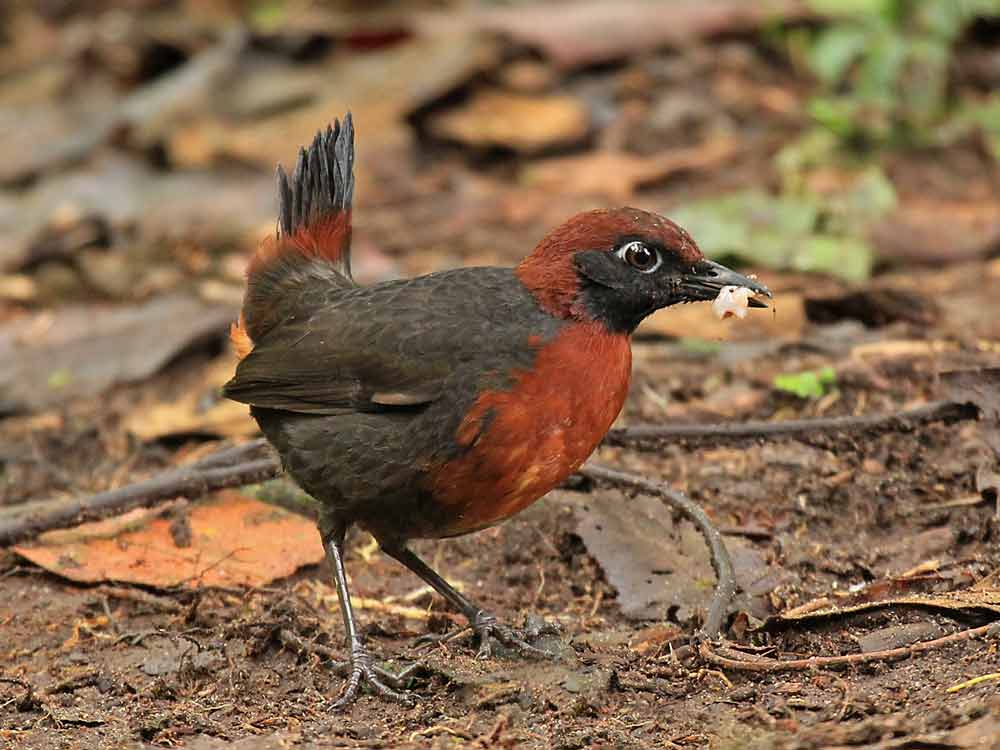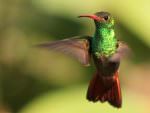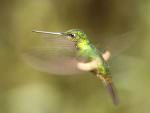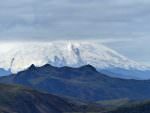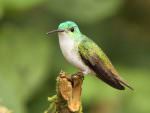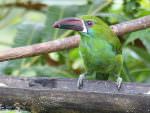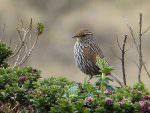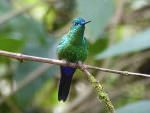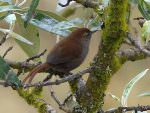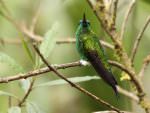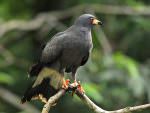Itinerary and price
Please note that due to weather conditions and other local considerations the following itinerary might need to be revised or re-ordered at short notice to maximise on the best birding opportunities.
If the price is too expensive we can look at changing a lodge or two and exploring the West slope on a shared guide basis.
Day 1: Flight to Quito to be organised by you.
For help with your flight arrangements and to receive a no obligation quote, you can complete the enquiry form on our website or call 0800 280 8947 to speak to a flight advisor at StudentUniverse (in partnership with Gapyear.com), part of the Flight Centre Travel Group, a leading retailer of airfares and worldwide flights.
Meals: Payable directly today
Your flight arrives in Quito today. For help with your flight arrangements and to receive a no obligation quote, you can email wildabouttravel@flightcentre.co.uk, use the enquiry form on our website or call 0800 280 8947 to speak to a flight advisor at Gapyear.com, part of the Flight Centre Travel Group, a leading retailer of airfares and worldwide flights.
Our driver will be outside Quito airport to receive you (look for your names on a placard) and transfer you to Hotel Sebastian. Relax for the remainder of the day. Dinner is payable directly this evening.
Note: Quito is located at high altitude in the Andes, almost 3,000m. To avoid any symptoms of altitude sickness and prepare for the following day we advise as early a night as possible with plenty of sleep AND avoid alcohol until you reach lower elevations.
Day 2: Quito – Yanacocha - Bellavista
Meals: Breakfast at Hotel Sebastian, lunch (at Alambi or Bellavista) and dinner at Bellavista
After breakfast at 0700 hours you will check out of your rooms. Our experienced guide will arrive by 0715 hours and accompany you till your final day of the west slope experience (the day you return to Quito).
It is a short drive along the famous Nono-Mindo eco road to the first birding destination - Yanachocha at 3,400m on the slopes of Volcan Pichincha. You’ll look for
Golden (Yellow) Grosbeak, Yellow-breasted (Rufous-naped) Brush Finch, Green-tailed Trainbearer and
Sparkling Violetear plus many other species on the way and you may hear an Antpitta or two, so it might take you a while to get there!
Yanacocha is just to the north west of Quito. Managed by the Fundación Jocotoco it was established in 2001. This area of high elevation cloud-forest is home to almost the entire known world population of the critically endangered
Black-breasted Puffleg hummingbird. The habitat is mainly high altitude Polylepis forest, less common now in the Andes due to agriculture and production of charcoal.
As you arrive at Yanacocha, listen and look for
Ocellated Tapaculo around the car park. This and
Rufous Antpitta are easier to hear than to see. From the entrance you will walk the old Inca trail through cloud forest habitat. Expect to see many species of hummingbird at numerous feeders along the route. The main star species is the endemic
Black-breasted Puffleg which is very difficult to see, so not guaranteed. Many other species of hummingbird occur here, including
Sword-billed Hummingbird, Buff-winged Starfrontlet, Golden-breasted Puffleg, Shining Sunbeam and
Great Sapphirewing, all of which can be seen at close quarters when they visit feeders by the track-side along with other common species like
Masked Flowerpiercer. Several species of Tanager occur here too and hopefully
Scarlet-bellied and
Black-chested Mountain-Tanagers might be added to the list.
Other sought-after species are
Curve-billed Tinamou,
Carunculated Caracara,
Imperial Snipe, Rainbow-bearded Thornbill and
Giant Conebill but these can be tricky to see. You may have a chance of seeing
Andean Condor, but don’t worry if you don’t, as you’ll have another chance on the East side of the Andes at Antisana and Papallacta.
From here you may be taken to Alambi on the way to Bellavista and have lunch here, or at Bellavista itself. Either way lunch is included today. The hummingbird and tanager feeding stations are great for photography.
Eventually today you will arrive at Bellavista and if time permits you’ll explore local trails and even birding along the road here is very productive. Relax for the evening.
Night at Bellavista Lodge in private room with own bathroom
Day 3: Bellavista and the Tandayapa Valley area
Meals: Breakfast, lunch and dinner
Today we’ll explore the Bellavista trails and local area at the top of the Tandayapa Valley for many Choco region endemics. Some of the special species might include
Swallow-tailed Nightjar,
Beautiful Jay,
Tanager Finch, Golden-headed and
Crested Quetzals. You could see
Sickle-winged Guan, Grass-green Tanager, Purple-bibbed Whitetip, Gorgeted Sunangel and
Red-billed Parrot. Here too you have another opportunity to look for
Ocellated and also
Spillmann’s Tapaculos. At some time or another it would be worth having a coffee or a beer (payable directly) at one or two of the local lodges which have good bird feeding areas – particularly if it starts to rain after lunch, which can be a regular occurrence in the cloud forest. You can often see 10 species of hummingbirds visiting the feeders at once and up to 20 species or so within one hour.
Night at Bellavista Lodge in private room with own bathroom
Day 4: Bellavista - Angel Paz Reserve - Bellavista
Meals: Breakfast, lunch and dinner
Today requires a very early start as we’ll visit Angel Paz’s private forest reserve, well known for the owner offering juicy worms to entice out some cracking species that are usually difficult to see -
Giant, Yellow-breasted, Ochre-breasted and
Moustached Antpittas. It isn’t just the antpittas, though, as this diverse forest is home to
Dark-backed Wood-Quail (a vulnerable Choco endemic),
Scaled and
Orange-breasted Fruiteaters and
Olivaceous Piha plus many other species including an opportunity to see
Andean Cock-of-the-rock.
We may add
Laughing and
Bat Falcons, Barred Forest-Falcon, White-throated Crake, Double-toothed Kite, Plumbeous Kite, Broad-winged Hawk,
Ruddy and
Plumbeous Pigeons,
Red-headed Barbet,
Lyre-tailed Nightjar,
Broad-billed Motmot, Crimson-mantled Woodpecker, Lesser Swallow-tailed Swift, White-collared Swift and
Velvet-purple Coronet.
Leaving Angel Paz we will spend the day locally exploring lowland forest areas, heading back to Bellavista where you can relax for the evening. Note: You will need to pack as you’ll check out of your room first thing in the morning.
Night at Bellavista Lodge in private room with own bathroom
Day 5: Bellavista - Milpe - Mindo
Meals: Breakfast, lunch and dinner
We have allocated the whole day to be spent at Milpe or in the Milpe area. Fingers crossed we should see
Club-winged Manakin as they lek here, and also hope for
Choco Toucan, Choco Trogon, Choco Warbler, White-whiskered Hermit, Rufous-throated and
Moss-backed Tanagers – all are Choco endemics.
Long-wattled Umbrellabird and
Golden-winged Manakin occur too, but are more difficult to see. Easier to come across are
Bronze-winged Parrot, Smooth-billed Ani, Ornate Flycatcher, Slate-throated Whitestart, Ecuadorian Thrush and
Orange-billed Sparrow. If weather dictates, there is a restaurant close by with very good fruit feeders outside the windows. You are sure to have an amazing day at Milpe which you will explore to the full. Returning to the Mindo area you’ll check in at El Septimo Paraiso Lodge for a two night stay. Previous clients saw
Tayra from the grounds and the forest trails here are productive too.
Day 6: Mindo area – Rio Silanche (and Oilbird cave) – Mindo area
Meals: Breakfast, box or cooked lunch and dinner
Today we will leave early and drive approx. 1 ½ - 2 hours to Rio Silanche. It is run by the Mindo Cloudforest Foundation and has an extensive bird list. Here your guide will help you search for
Pacific Parrotlet and
Pacific Hornero (both are Tumbesian endemics),
Orange-fronted Barbet, Scarlet-breasted Dacnis, Grey-and-gold, Blue-whiskered, Ochre-breasted and
Scarlet-browed Tanagers (all Choco endemics) and many other species that are easier to see like
White-bearded Manakin, Squirrel Cuckoo, Rufous-tailed and
Purple-chested Hummingbirds,
Golden-olive Woodpecker, Masked Tityra, Yellow-tufted Dacnis and some more
tanagers including
Silver-throated, Blue-necked and
Golden-hooded. Return to El Septimo Paraiso late in the afternoon having visited an
Oilbird cave on the journey.
Day 7: Mindo area - Quito
Breakfast and lunch
Your guide will discuss with you the best areas to visit today, based on the species left to see and your guide will accompany you back to Quito where you’ll say your farewells, as another guide will accompany you down the Andean East slope. Check in at your hotel.
Night at Hotel Sebastian or Hotel San Carlos de Tababela.
Day 8: Quito – Antisana – Papallacta and Guango Lodge
Meals: Breakfast in Quito, lunch and dinner
Today we recommend an early breakfast. For these next few days we’ll be exploring the East slope of the Andes for birds and mammals. You’ll encounter some species common with the North West slope and others that are only found at high altitude or on the East slope. We recommend breakfast at 0600 hours, then leave the hotel by 0630 hours with your guide. The drive to Antisana is approx. 1 ½ hours + stops. We will stop as and when required on the journey to look for species which may include
Giant Hummingbird and
Aplomado Falcon. Other target species include
Andean Condor, Andean (Black-faced) Ibis, Ecuadorian Hillstar, Carunculated Caracara, Silvery Grebe, Andean Ruddy Duck, Andean Teal, Andean Lapwing, Streak-backed Canastero, Chestnut-winged (Bar-winged) and
Stout-billed Cinclodes. Sometimes
Culpeo (Andean Fox) is seen here. The plan will be to spend the morning around Antisana and have lunch here.
From Antisana you’ll head to Papallacta (another 1 ½ hour drive) and do some birding here, or at lower elevations if the altitude and weather conditions dictate. It will be another 45 minute drive to Guango Lodge, your base for two nights, and the plan will be to arrive around 1700 hours and dinner is usually at 1900 hours. At Papallacta there’s a slim chance to see both
Mountain Tapir and
Spectacled Bear, though both are very difficult.
Night at Guango Lodge
Day 9: Guango area (inc. time at Papallacta if required)
Meals: Breakfast, lunch or boxed lunch from Guango Lodge and dinner
We recommend breakfast at 0530 or 0600 hours. Based from Guango Lodge you’ll have plenty to look out for. Target species include
Torrent Duck, Andean Guan, many
hummingbirds including Sword-billed,
Grey-breasted Mountain-Toucan, Dusky Piha, White-capped Dipper, Blue-backed Conebill, Buff-breasted Mountain-Tanager, Grey-hooded Bush-Tanager, Black-capped Hemispingus, Plushcap, (Northern) Mountain Cacique, Pale-naped and
Slaty Brush-Finches.
If you didn’t see your target species at Papallacta the day before, then you may try again today. Targets in this area include
Rufous-bellied Seedsnipe, Blue-mantled Thornbill, Viridian Metaltail, Andean Tit-Spinetail, Many-striped Canastero, White-chinned Thistletail, Tawny Antpitta, Red-crested Cotinga, Giant Conebill, Golden-crowned Tanager, Masked Mountain-Tanager, Black-chested Mountain-Tanager and
Black-backed Bush-Tanager.
Night at Guango Lodge.
Day 10: Guango - San Isidro
Meals: Breakfast, lunch and dinner
Today we’ll leave for San Isidro Lodge, a journey of approximately 1 ½ hours. Another early breakfast is proposed (0530 – 0600 hours) but the start time to San Isidro can be a little flexible, depending on how the bird list is going. Target species in the San Isidro area include
Black-and-chestnut Eagle, Wattled Guan, Black-banded (“San Isidro”) Owl, Rufous-banded Owl, another chance for A
ndean Potoo, Rufous-bellied Nighthawk, Oilbird, Crested and
Golden-headed Quetzal, Masked Trogon, Andean (Highland) Motmot, Crimson-mantled Woodpecker, Powerful Woodpecker, Streak-headed (Long-tailed) Antbird, Chestnut-crowned Antpitta, White-bellied Antpitta, Slate-crowned Antpitta,
Rufous-crowned Tody-Flycatcher, Barred Becard, Black-billed Peppershrike, Chestnut-breasted Chlorophonia, Flame-faced Tanager, White-capped Tanager and
Subtropical Cacique. Mammals we will look out for include
Black Agouti, possible
Mountain Tapir, Kinkajou and the very rare
Giant Anteater. Night at San Isidro Lodge. Note: At night we have a chance of seeing the
San Isidro Owl, which is a high elevation form of Black-banded Owl and possibly a new species or subspecies. They often sit in the lodge grounds and are normally fairly easy to find.
Day 11: San Isidro - Guacamoyos - Wildsumaco
Meals: Breakfast, box lunch and dinner
Again breakfast is recommended for 0530 – 0600 hours then you’ll check out of San Isidro Lodge and journey to Wildsumaco. Just a 30 minute drive from San Isidro is Guacamayos where target species include
White-throated Screech-Owl, Swallow-tailed Nightjar, Black-billed Mountain-Toucan, Streaked Tuftedcheek, Flammulated Treehunter, Strong-billed Woodcreeper, Greater Scythebill (very rare),
Barred Antthrush, Ocellated Tapaculo, Handsome Flycatcher, Rufous-headed Pygmy-Tyrant, Slaty-backed Chat-Tyrant, Green-and-black Fruiteater, Black-chested Fruiteater, Golden-eyed Flowerpiercer, Chestnut-bellied Thrush, Vermilion Tanager, Blue-browed Tanager, Rufous-crested Tanager and
Grass-green Tanager. Lunch can be wherever you please but is likely to be at Guacamayos. In the afternoon you will do roadside birding on the way to Wildsumaco Lodge, your base for three nights, then relax for the rest of the evening. You can expect to arrive by 1700 hours and have dinner around 1830 hours.
Night at Wildsumaco Lodge
Day 12: Wildsumaco area
Meals: Breakfast, lunch and dinner
Breakfast at 0530 – 0600 hours. Yet again we’ll have a great time exploring another ecologically diverse area for birds and mammals. Today we will bird the Antpitta trail in the morning where two species of
Antpitta are possible,
Plain-backed and
Ochre-breasted. In the afternoon spending time around the lodge and checking the hummingbird feeders would be well worth while. After dinner at 1830 we will make time to specifically look for mammals and owls from Wildsumaco by taking a night walk and actively searching with a high-powered torch for a chance on
Margay, Opossums, Kinkajou and
Night monkey. Target species for Wildsumaco include
Black Hawk-Eagle, several species of
Forest-Falcons, Rufous-breasted Wood-Quail, Blackish Rail, Scaled Pigeon, Military Macaw, Spot-winged Parrotlet, Vermiculated (Foothill) Screech-Owl, Rufescent Screech-Owl, Band-bellied Owl, many, many
hummingbirds (too many to mention),
Coppery-chested Jacamar, Black-streaked Puffbird, Chestnut-tipped Toucanet, Golden-collared Toucanet, Black-mandibled Toucan, Rufous-breasted and Lafresnaye’s Piculet, Crimson-bellied Woodpecker, Black-billed Treehunter, Red-billed Scythebill, Lined Antshrike, Russet Antshrike, White-streaked Antvireo, Foothill Antwren, Plain-winged Antwren, Yellow-breasted Antwren, Blackish Antbird, White-backed Fire-eye, Short-tailed Antthrush, Plain-backed Antpitta, Ochre-breasted Antpitta, Chestnut-crowned Gnateater, a lot of
flycatchers (too many to list but including Yellow-throated Spadebill),
Scarlet-breasted and
Fiery-throated Fruiteater, Gray-tailed Piha, Rufous-naped Greenlet, Gray-mantled Wren, Musician Wren, Wing-banded Wren, Golden-collared Honeycreeper, Blue-naped Chlorophonia, Bronze-green Euphonia, Orange-eared Tanager, Golden-eared Tanager, Paradise Tanager, Fulvous Shrike-Tanager, Olive Finch, Blue-rumped and
White-crowned Manakin.
Night at Wildsumaco Lodge
Day 13: Wildsumaco area
Meals: Breakfast, lunch and dinner
Expect breakfast around the same time. In the mornings and afternoons you can explore various trails including the F.A.C.E trail and Benavides Trail with dinner around 1830 hours. At the end of this evening you will say goodbye to your East slope guide, as the transfer tomorrow will be with your driver only.
Night at Wildsumaco Lodge
Day 14: Wildsumaco – Coca – Sacha
Meals: Breakfast at Wildsumaco, packed lunch provided by Sacha Lodge at La Mision and dinner at Sacha Lodge
You may have a little time before breakfast to explore locally around the lodge (without guide today). Then you will leave Wildsummaco Lodge for the 2 hour drive (allowing time for delays) to Coca to arrive at La Mision Port in Coca at 1100 hours without fail. Other Sacha guests arriving in Coca on a flight from Quito will arrive at La Mision Port and from here you’ll meet your Sacha Lodge representative who will guide you to where you’ll board a high-powered motorised canoe and your journey along the Napo River will begin, followed by a short stroll along a boardwalk and the final part of the journey by dugout canoe. If you are lucky
Red Howler Monkey, Great or
Common Potoo and
Hoatzin may put in an appearance before you reach Sacha Lodge! Your luggage will arrive as if by magic at the lodge and staff will explain the plan for the next few days, you'll check-in to your cabins and meet your guide for a late afternoon journey by dugout canoe along some of the Amazonian channels.
Days 15, 16 and 17: Sacha area
Meals: Breakfast, lunch and dinner
The wildlife around Sacha is extremely diverse and experienced guides will help point out many characteristic species of the area. Over these days explore trails on foot, channels by dugout canoe, birdwatch from the top of a canopy tower and walk through the tree tops along the impressive canopy walkway. We are likely to see
Many-banded Aracari, Spangled Cotingas, Blue-and-Yellow Macaw, Golden-collared Toucanet, Green-and-Gold and
Opal-rumped Tanagers at eye level from the canopy walkway and towers. On forest walks mammals may include
Squirrel Monkey, Pygmy Marmoset, White-fronted Capuchin and
Night Monkey. Nights at Sacha Lodge. At some point during these three days you will visit the parrot clay licks at Yasuni National Park where you will need to pay the entrance fee of approx. $22 per person directly.
Day 18: Sacha – Coca – Quito
Meals: Breakfast
Today you journey back to Coca and Quito from Sacha Lodge (time and flight details to be supplied), returning the way you arrived via the channels, boardwalk, Napo River and a flight departing Coca for Quito.
Tours ends.
Note: You can if you wish extend your experience in the Amazon rainforest with a stay at Napo Wildlife Centre. Please enquire and we can supply a supplement.
Extra note: If you require an extra night in Quito to link with your international flight please enquire and we can provide a supplement.
Price per person valid from 1 January to 31 December 2019:
Based on two travelling on a twin share basis: US $ 6710
Based on three travelling on a twin share basis: US $ 5790
Based on four travelling on a twin share basis: US $ 5270
Single supplement US $ 670
Price includes:
Accommodation as specified
All land transfers for the duration
Meals as mentioned above
All entrance fees to sanctuaries for the whole tour (except Yasuni in the Amazon which is payable directly)
Bird checklist, pre-travel and top tips for travel advice
And for the West slope…
Services of an experienced guide on an exclusive basis
And for the East slope…
Services of an experienced guide on an exclusive basis
And for the Amazon…
All land/boat transfers
Experienced bilingual naturalist guide at Sacha Lodge and a native guide (max. group size is usually 6 at Sacha)
Price excludes:
International flight
Internal flight from Coca – Quito (approx. US $ 120 per person)
Yasuni entrance fee when you visit the parrot clay licks (approx. US $22 per person)
Travel insurance
All drinks. You may need to purchase the odd tea/coffee/beer every now and again at establishments with excellent veranda/restaurant bird feeding stations
Tips
Phone calls, laundry and anything else of personal nature

